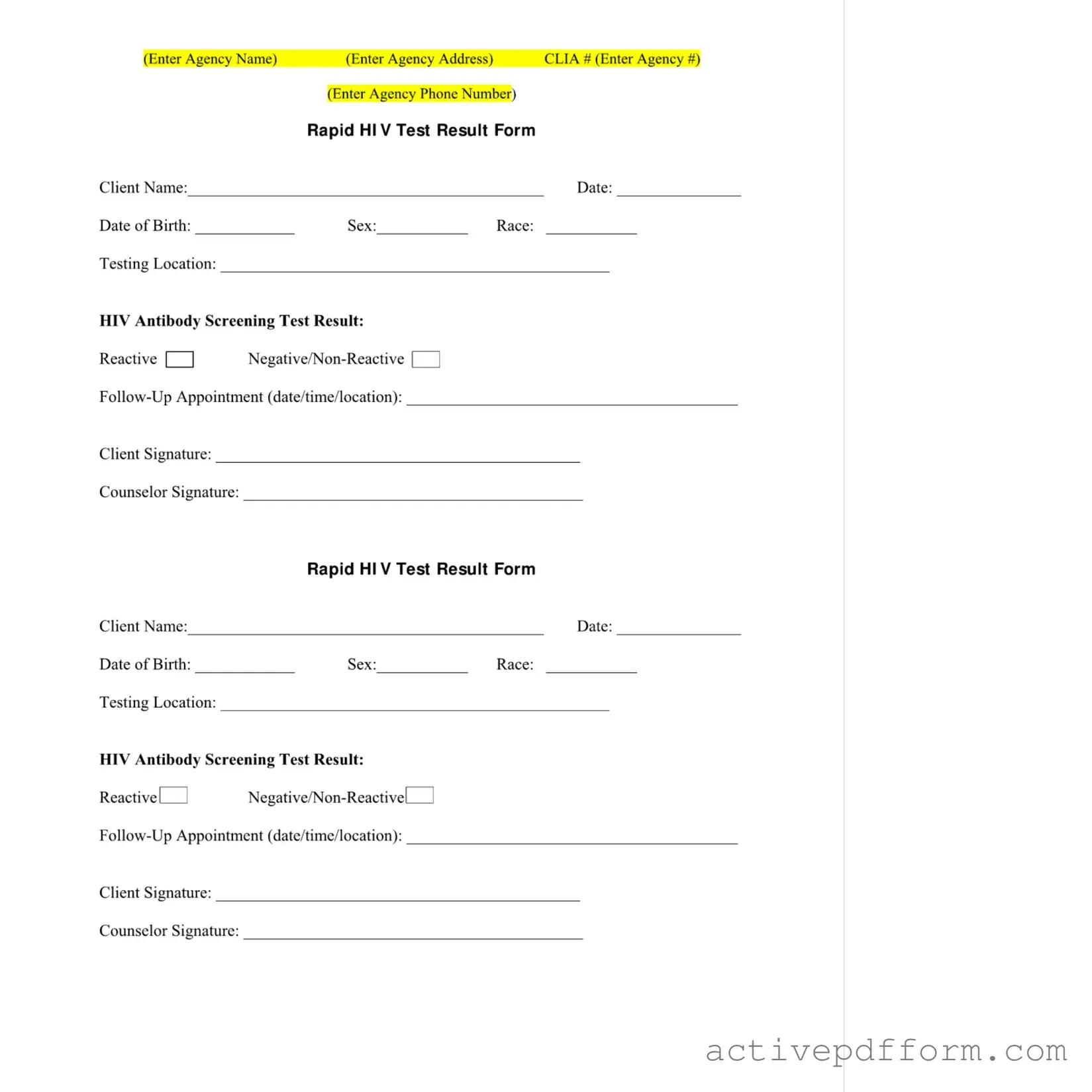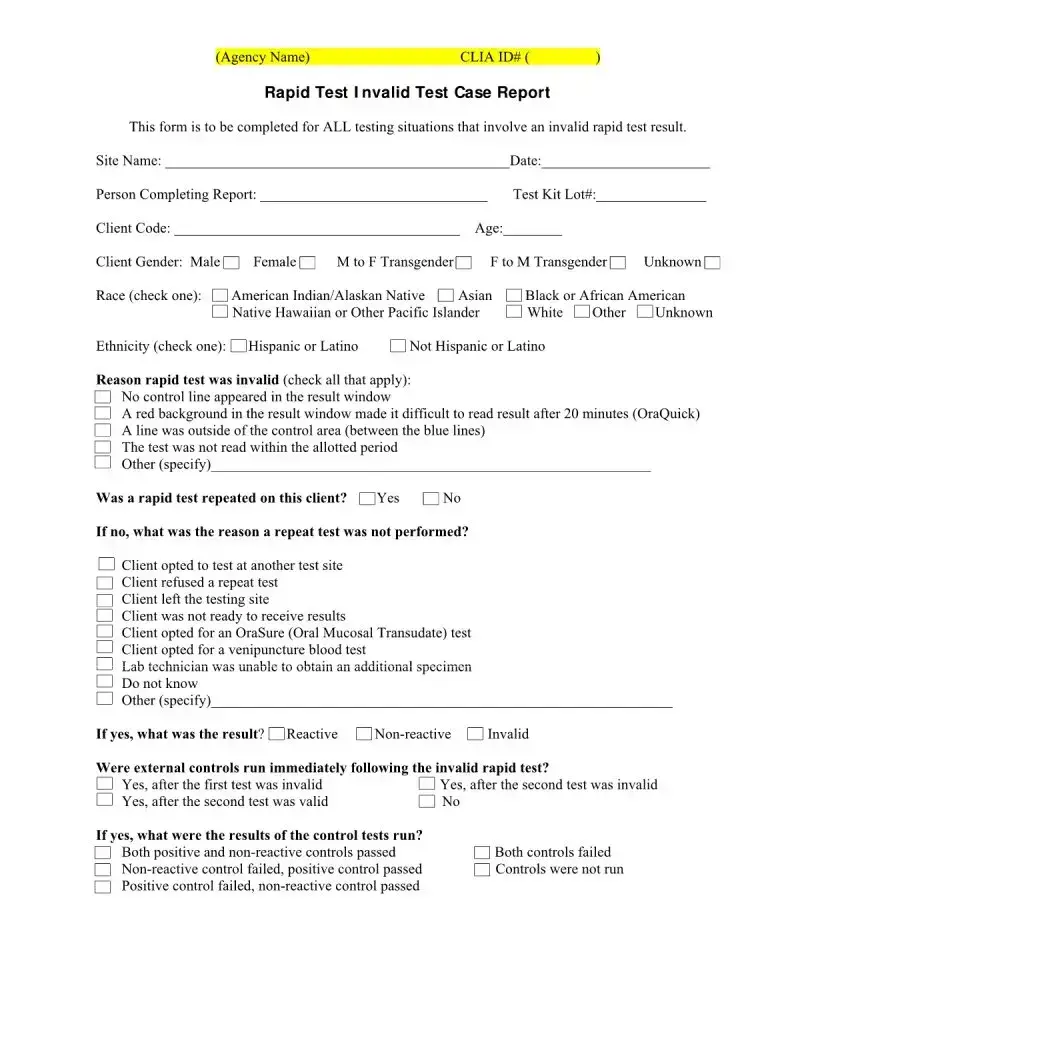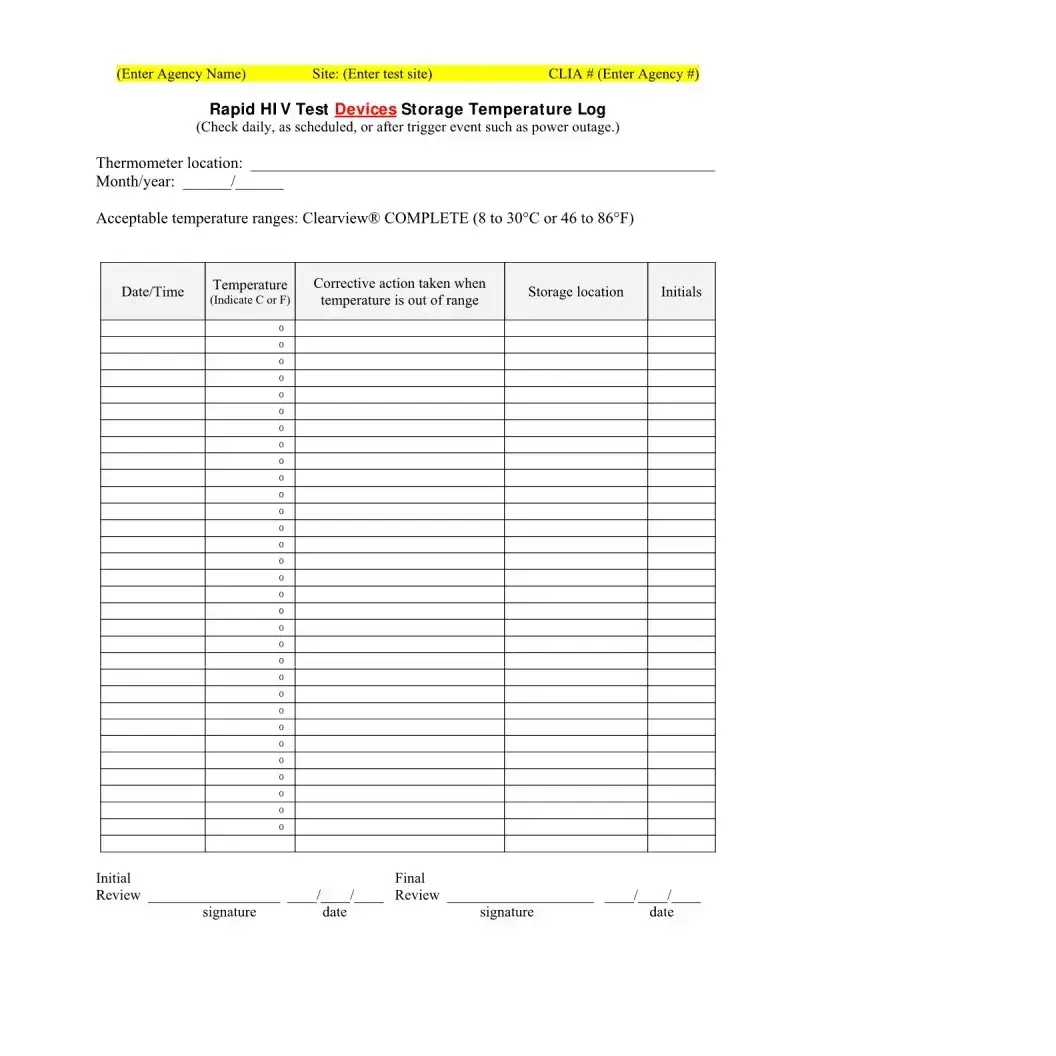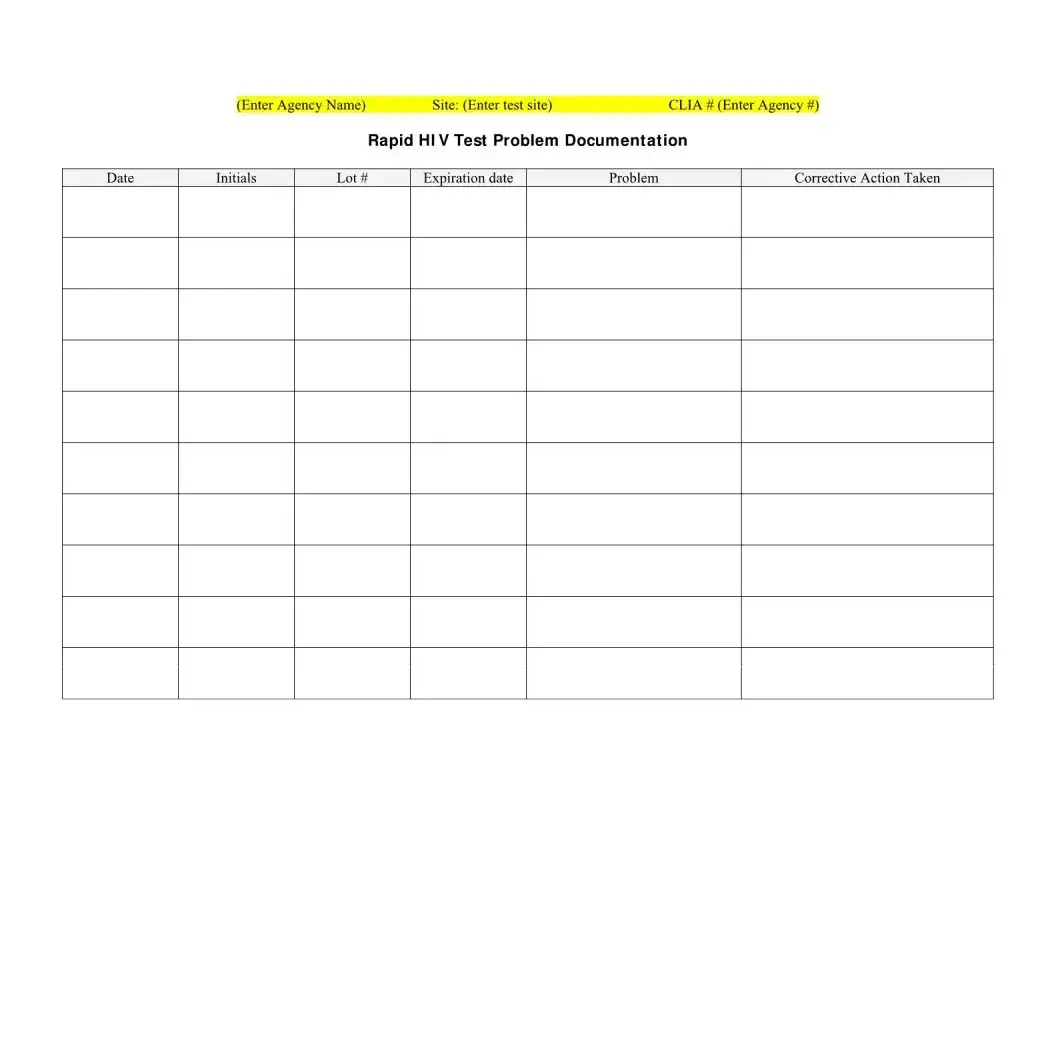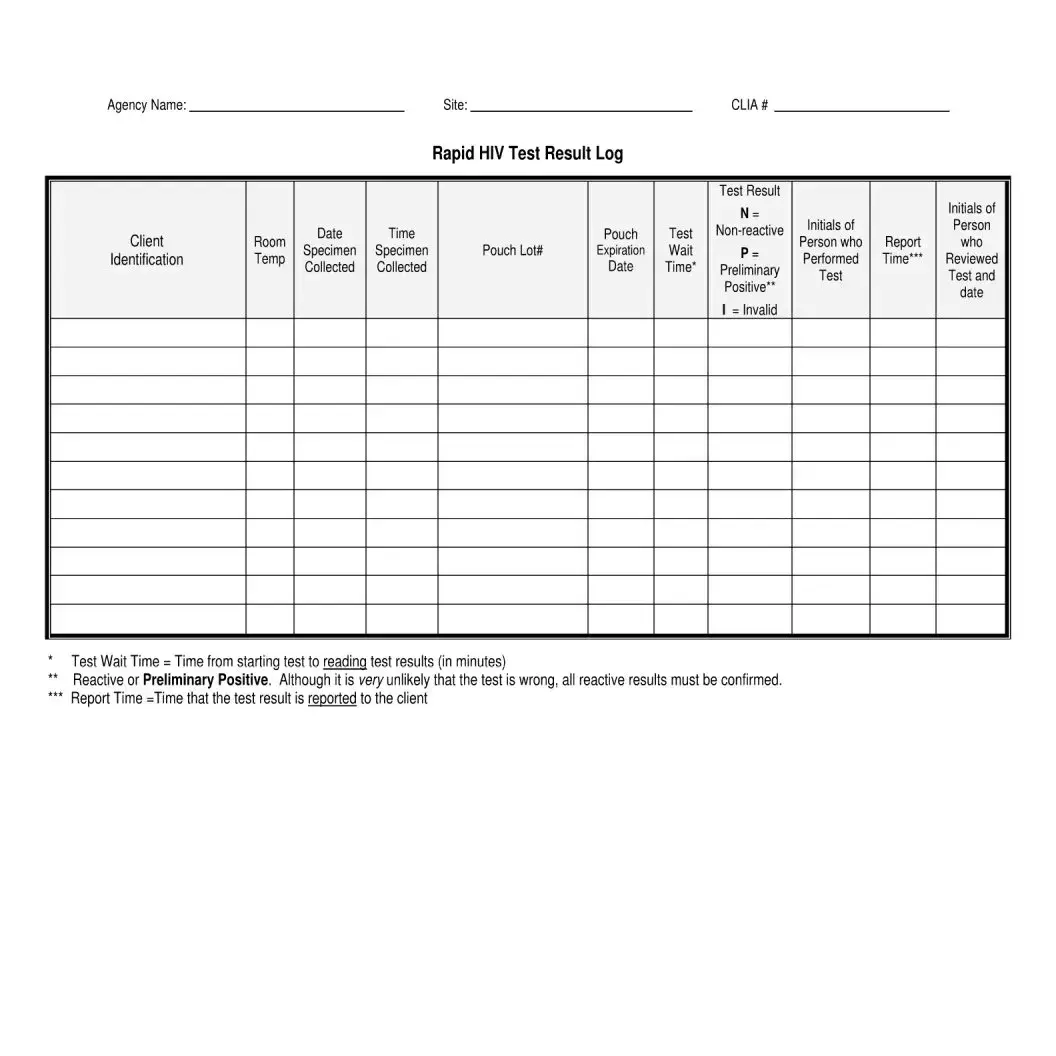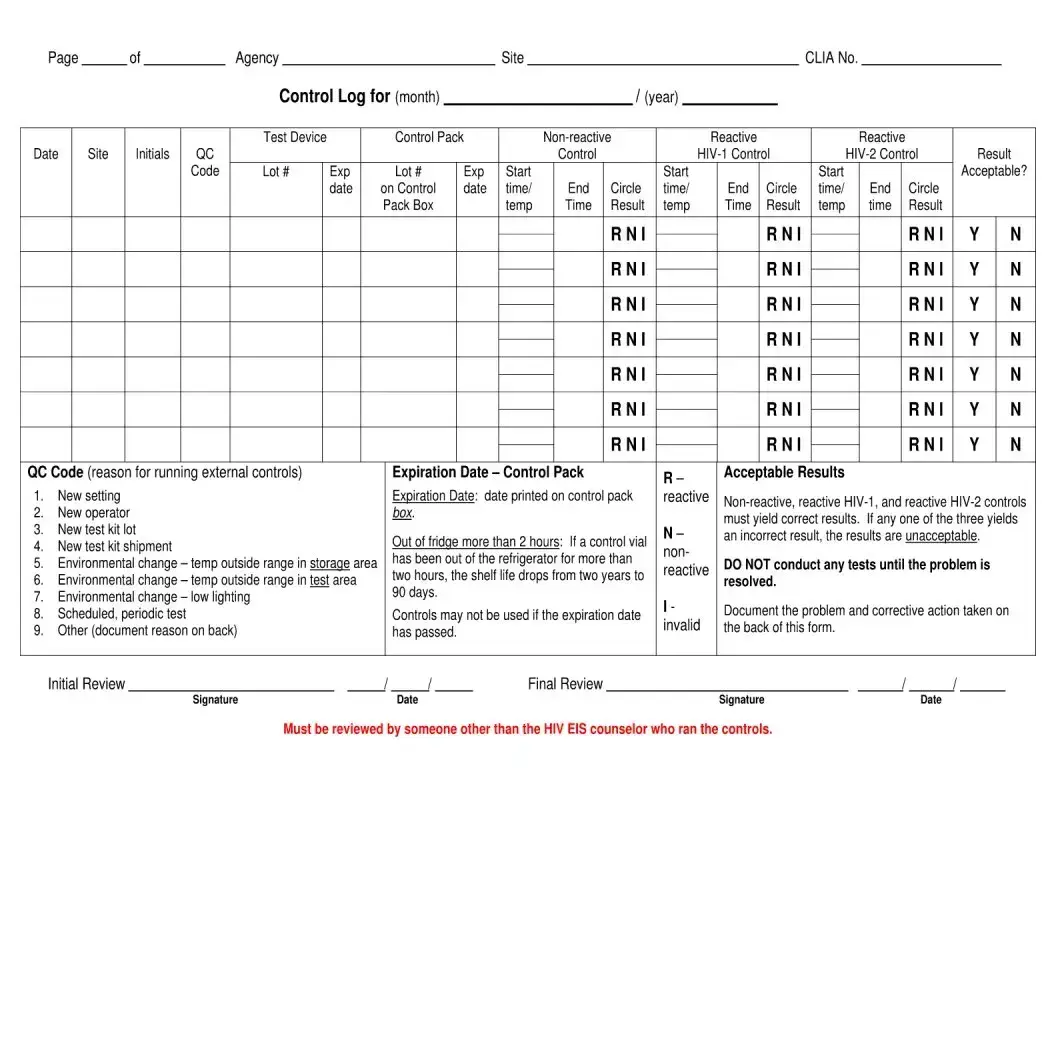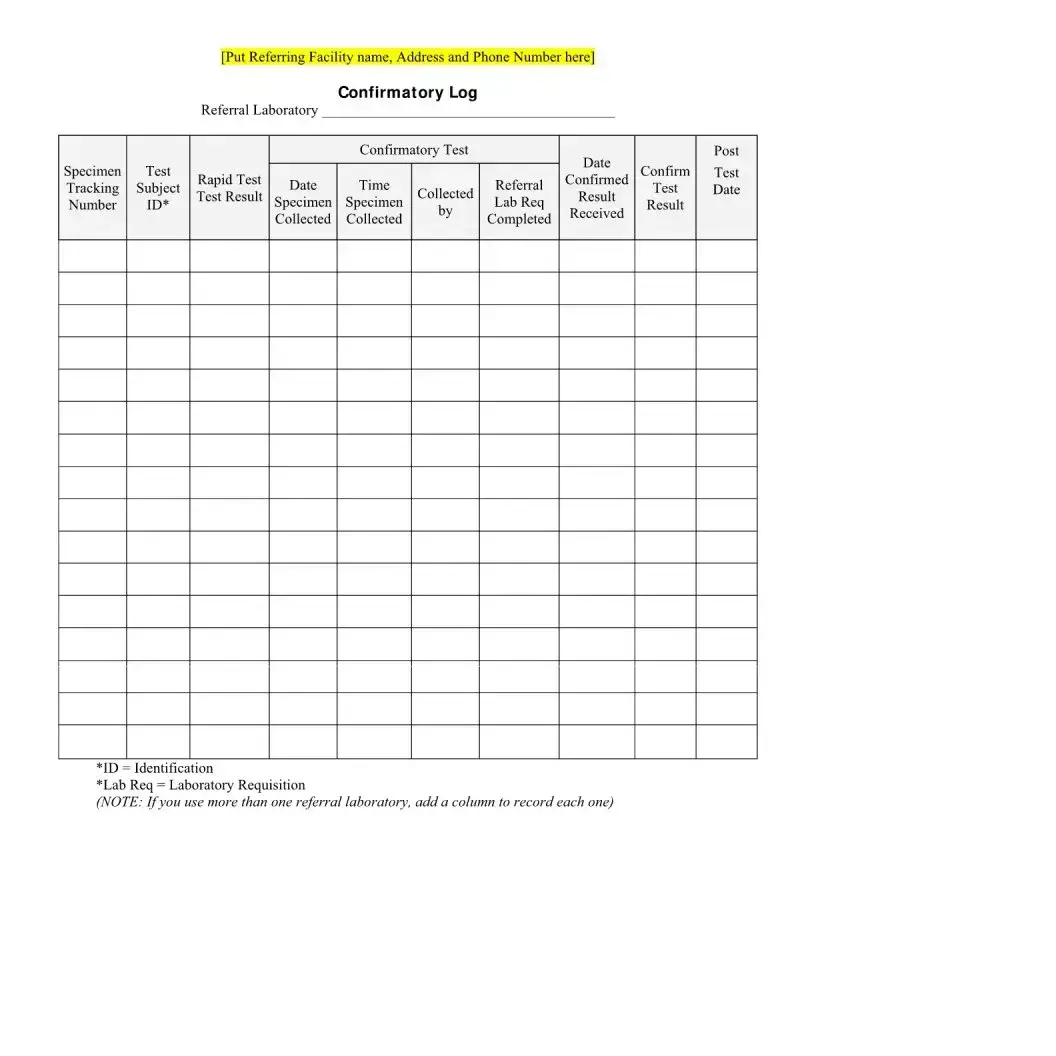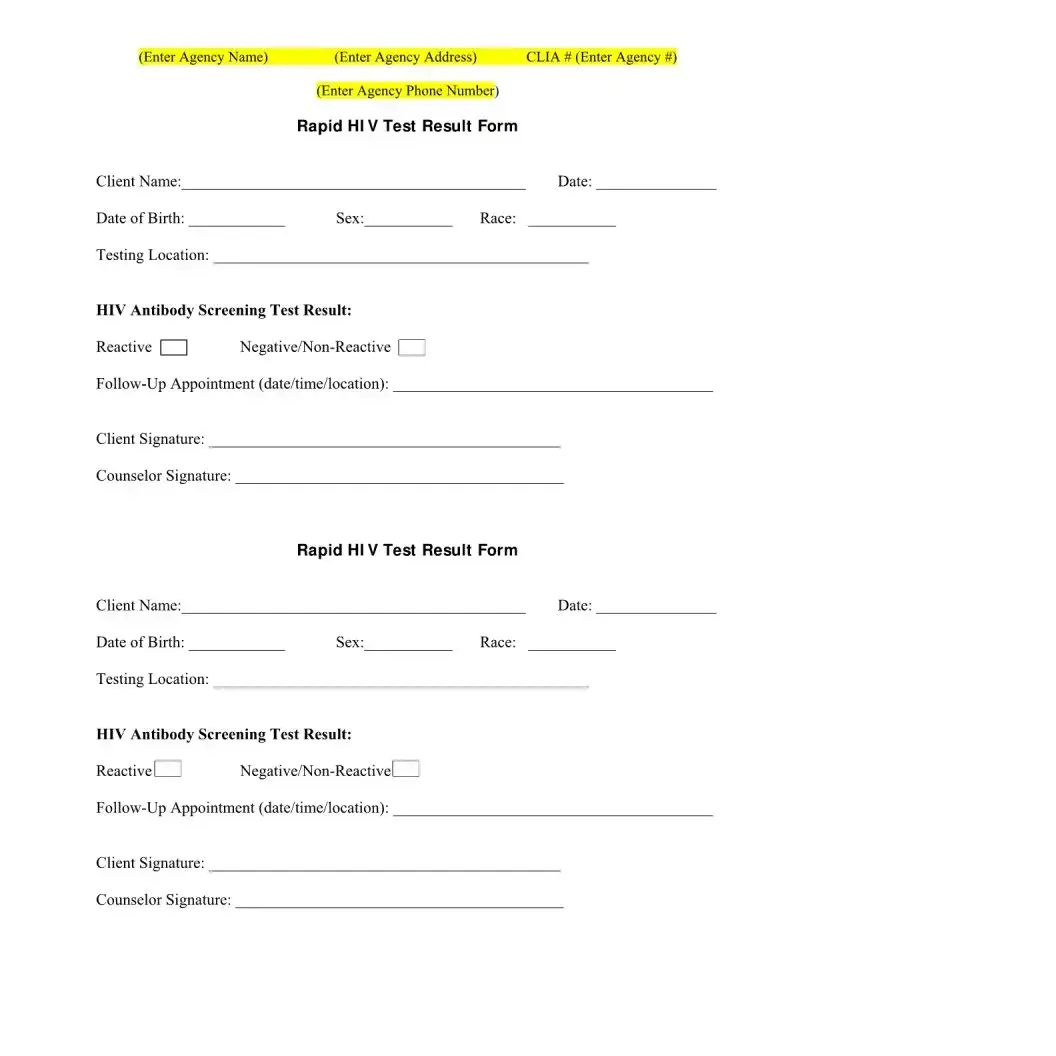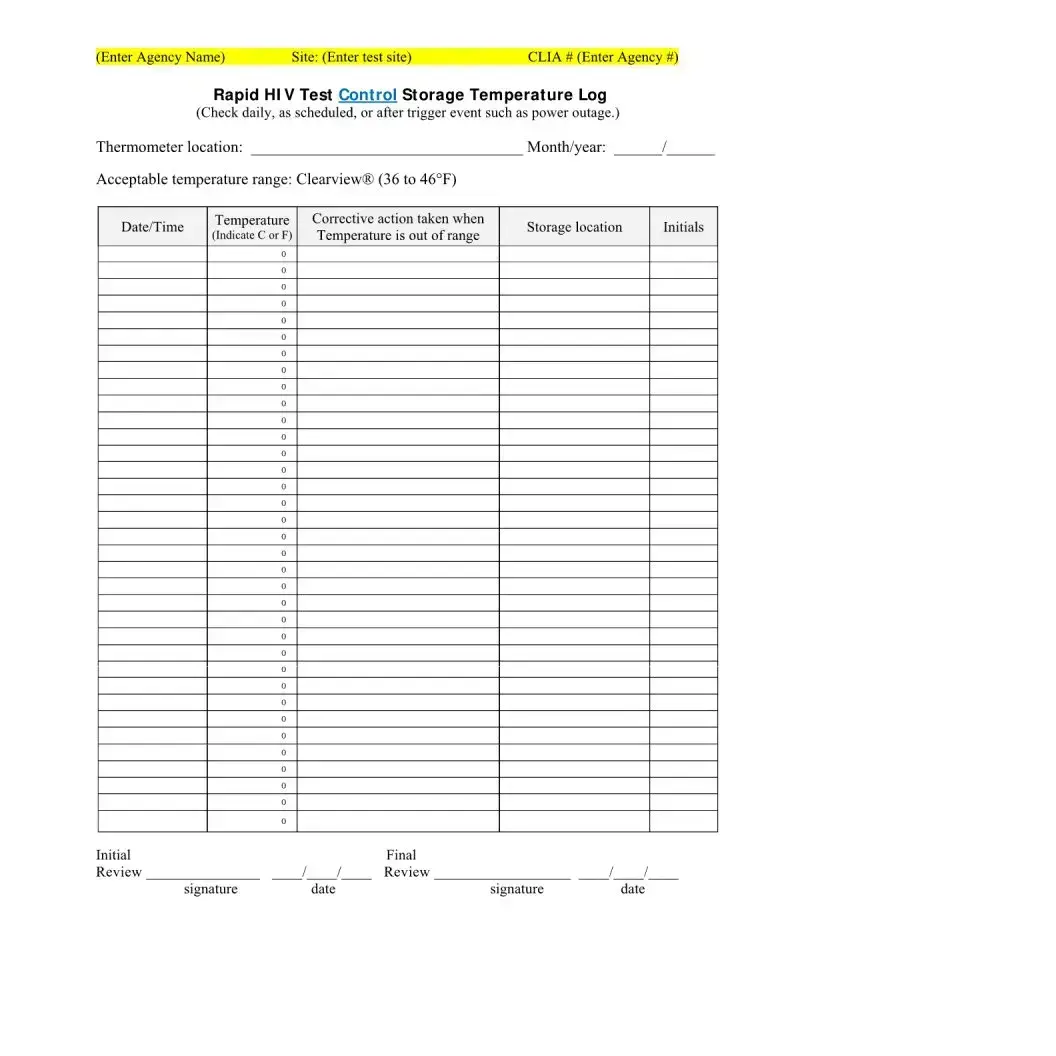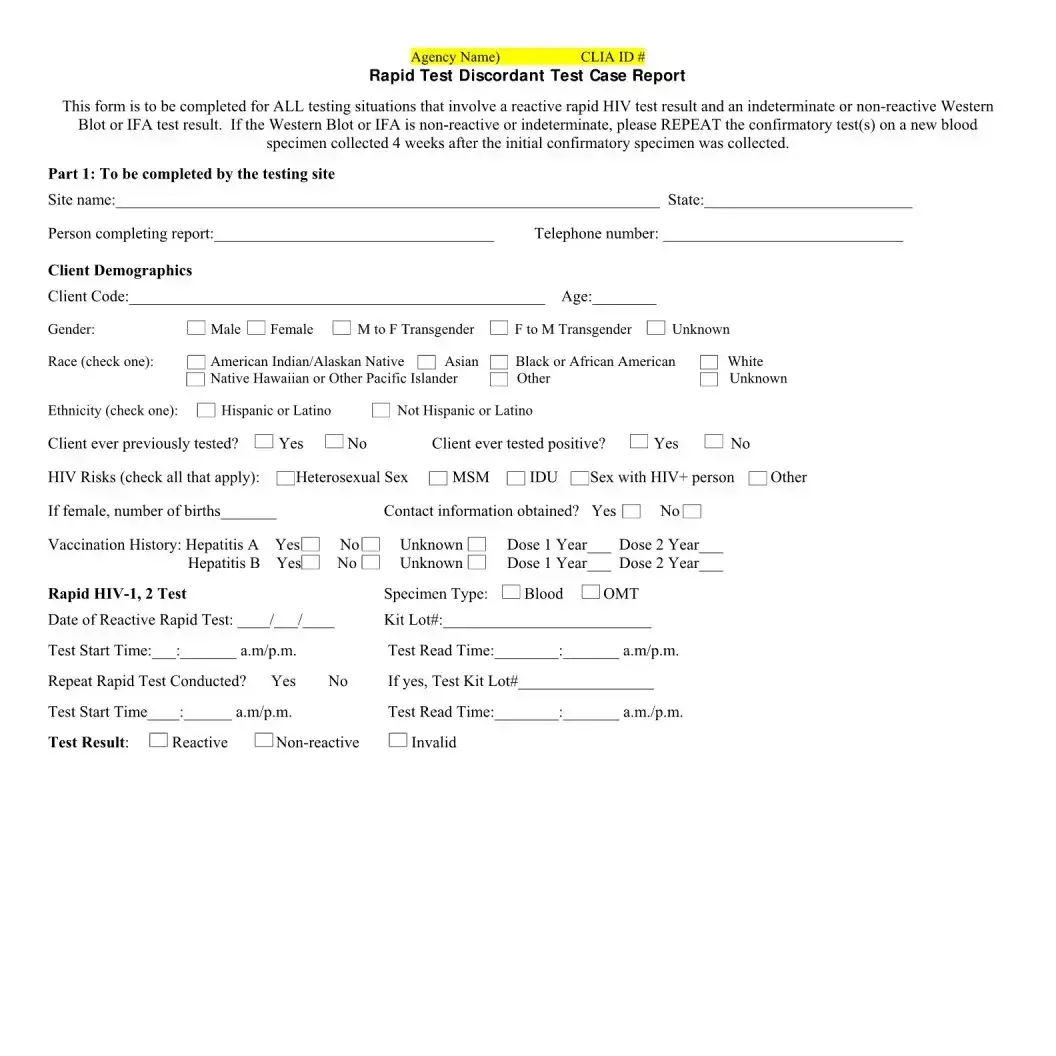What is a Negative HIV Test Form?
A Negative HIV Test Form is a document used to record the results of an HIV antibody screening test. It indicates that the test result for the individual is non-reactive, meaning that there is no evidence of HIV infection at the time of testing. This form typically includes essential details such as the client's name, date of birth, race, testing location, and the signatures of both the client and the counselor.
What information is included on the form?
The form contains several key pieces of information. It lists the client's name, date of birth, race, and the testing location. The HIV Antibody Screening Test Result section clearly indicates whether the result is reactive or negative/non-reactive. Additionally, there is space for a follow-up appointment, as well as signatures from both the client and the counselor, confirming the test result and the counseling provided.
How should the form be stored and handled?
Proper storage and handling of the Negative HIV Test Form are crucial for maintaining confidentiality and compliance with health regulations. The form should be stored securely in a locked location, accessible only to authorized personnel. It is also important to ensure that any electronic records are protected with strong passwords and encryption. Regular audits should be conducted to ensure that all forms are accounted for and handled according to privacy laws.
What should I do if I receive a reactive result?
If you receive a reactive result on your HIV test, it is essential to follow up with a healthcare provider for confirmatory testing. Reactive results do not necessarily mean that you are HIV positive, as false positives can occur. The healthcare provider will guide you through the next steps, which may include additional testing and counseling to discuss your options and support.
How often should testing be done?
The frequency of HIV testing depends on individual risk factors and behaviors. The Centers for Disease Control and Prevention (CDC) recommends that individuals at higher risk, such as those with multiple sexual partners or those who inject drugs, get tested at least once a year. However, anyone who is sexually active should consider regular testing as part of their health routine. Consulting with a healthcare provider can help determine the best testing schedule for you.
